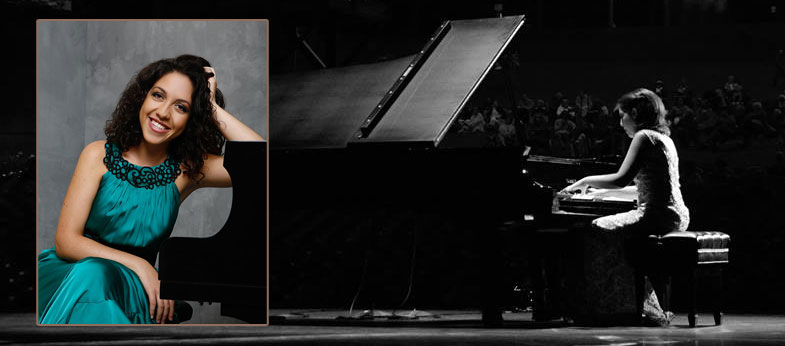

- About
- Program
- Program Notes
- Listen
About
Born to a family of musicians in 1993, Beatrice Rana made her debut at age nine, performing Bach’s Concerto in F minor. In June 2013, she won Silver (2nd Prize) and the Audience Award at the Van Cliburn International Piano Competition, having already attracted international attention in 2011 when she won 1st Prize and all special prizes at the Montreal International Competition.
Ms. Rana is invited to concert series and festivals throughout the world, including Zurich’s Tonhalle, Vienna’s Musikverein, Paris’ Theatre des Champs Elysées, London’s Wigmore Hall, Washington’s Kennedy Center, the Verbier Festival and Klavier Festival Ruhr. She has played or is due to play with the Los Angeles Philharmonic, Detroit Symphony Orchestra, London Philharmonic Orchestra, Accademia di Santa Cecilia, Philadelphia Orchestra, and Dresdner Philharmonie, with conductors like Zubin Mehta, Trevor Pinnock and Leonard Slatkin.
Harmonia Mundi released an acclaimed live CD of her Cliburn performances, prompting Gramophone magazine to proclaim that she “possesses . . . more than a touch of genius.” Her 2015 album for Warner Classics featured Prokofi ev’s Piano Concerto No. 2 and Tchaikovsky’s Piano Concerto No. 1.